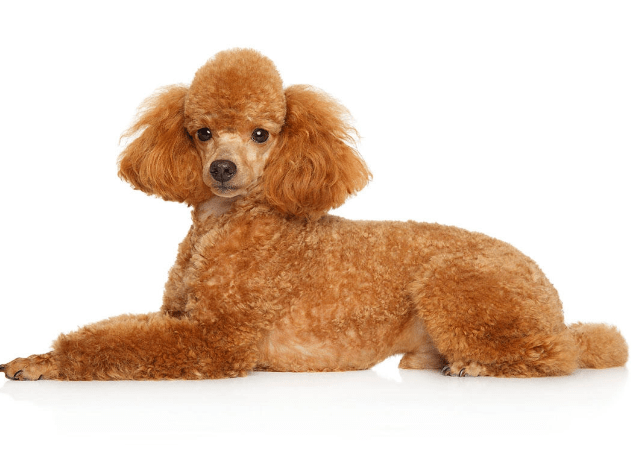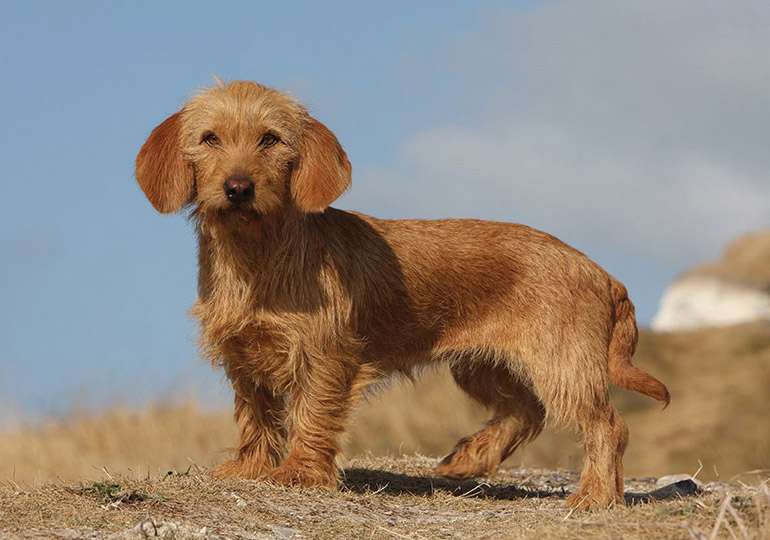
Description
The average height and weight of a miniature poodle are 10-15 inches and 10-15 pounds, respectively. Because they were originally used as water retrieving dogs for duck hunters, miniature poodles have muscular, athletic physique like their standard and toy-size cousins.
Mini poodles have curly coats, lively faces, and dark eyes like their breed cousins. Most miniature poodle owners prefer the understated sports clip, a short, one-length cut that looks a little less like a topiary, to the complex continental haircut, which is popular with show poodles and features curling pom-poms neatly sculpted and clipped around the joints and chest.
History/Origin
In order to appeal to owners who didn’t want such a big dog but were charmed by their personalities and eagerness for all types of labour, the Miniature Poodle was developed as a smaller version of the original Poodle. Circuses, who were using this highly clever, simple to train, amiable, and even amusing dog in their shows with great success but felt the Standard Poodles just a little bit too big, were the main drivers behind this need for a smaller Poodle.
The Toy Poodle was the name given to the Miniature Poodle up until 1907, but as even smaller variations of the breed gained popularity as a result of selective breeding, they came to be known as Toys, while Miniature was used to denote dogs that were 11 to 15 inches in height.
Temperament
The temperament of miniature poodles is also in the middle of the pack when compared to other dogs of the same breed. The standard poodle is the calmest of the three, whereas tiny toy poodles are slightly more energetic. All poodle breeds have a tendency to be timid and worried at times, and they thrive in quiet homes with lots of love and care.
Poodles at miniature sizes are witty, energetic, and lively. When they are puppies and young dogs, they enjoy playing and romping almost nonstop. Although their levels of activity do alter as they age, you should anticipate your miniature poodle to remain rather active even as an adult dog.

Care as a Pet
Exercise Needs
The Miniature Poodle is an energetic dog who appreciates exercise and will be content with one to two hours per day. However, they will still enjoy games, training, interactive toys, and being included in all family activities during the remaining hours. They may become overactive and boisterous if they are bored or under-exercised.
Nutrition and Feeding
Small dogs must consume small amounts of food frequently because of their small stomachs, but they also have a fast metabolism, which means they waste energy quickly. Small-breed diets are made with smaller kibble sizes to fit smaller mouths and appropriate quantities of vital nutrients. Additionally, this promotes chewing and enhances digestion.
Grooming
Miniature Poodles don’t shed, and most allergic individuals can live with them (though not always). But maintaining their coats requires a lot of attention; they typically need professional grooming in addition to routine home brushing and combing. Every six weeks or so, the poodle should be taken to a groomer to have its nails cut, though you can also learn how to do it yourself. A groomer will also offer ear care advice.
Training
Poodles are intelligent, quick learners, and devoted to their owners, making them a joy to teach. They are completely capable of participating in dog sports like small agility, heelwork to music, and obedience. In fact, training and working with their owner will keep this frequently busy dog happy and comfortable.
Table





